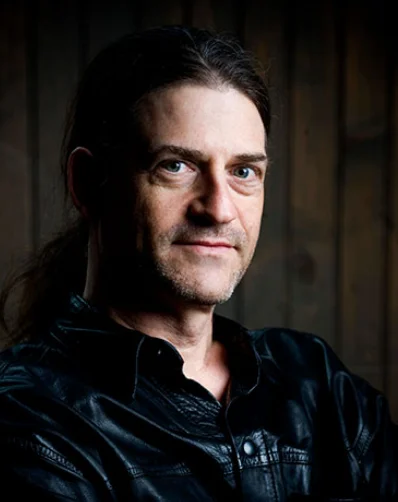Biography
Steve Tobin, born in 1957 in Philadelphia, Pennsylvania, stands as an American conceptual artist celebrated for his expansive sculptures and groundbreaking techniques utilizing bronze, steel, stone, glass, and ceramics. Renowned for intertwining a nature-centric axiomatic philosophy with industrial processes, Tobin has been at the forefront of fostering existential transformation and environmental awareness since the 1980s. His art transforms mathematical patterns into tangible expressions, with one of his most significant works being the Trinity Root—a twenty-foot-tall bronze cast of a seventy-year-old sycamore tree that shielded St. Paul’s Chapel from debris on 9/11. This masterpiece adorned the courtyard of Trinity Church in New York’s Financial District from 2005 to 2015, gaining recognition in The New York Times.
Tobin’s artistic journey diverges from formal education, as he encountered art through physics experiments stemming from his science training. He delved into theoretical mathematics and physics at Tulane University, contributing to material science experiments at the University of Pennsylvania’s Laboratory for Research on the Structure of Matter (LRSM). His immersion in experiments on matter’s structure, involving crystal growth, polishing, and electron microscope studies, continues to influence his work. Transitioning from glassmaking techniques in the late 1970s to the late 1990s, Tobin invented and taught his methods globally, earning him worldwide recognition.
In the early 2000s, Tobin shifted focus, forging a lasting partnership with renowned gallerist Ivan Karp and his OK Harris Gallery in Soho. The aftermath of 9/11 prompted Tobin to transition from glass and ceramics to creating massive works in bronze and steel. Notable series, Roots and Steelroots, drew inspiration from tree root systems and the fluid strokes of Asian calligraphy learned during Tobin’s teaching years in Japan. Following Karp’s passing in 2012, Tobin veered away from commercial galleries, opting for a social practice approach to art. He showcased large-scale sculptures in over 20 countries, embodying his diverse artistic prowess and commitment to humanism and environmental ideals.
Tobin’s unique artistic style seamlessly merges elements of nature, technology, and craftsmanship, reflecting his background in physics and mathematics. His sculptures initiate a dialogue between organic forms and industrial materials, embodying a synthesis of natural and man-made elements. Guided by his scientific understanding, Tobin transforms materials into art, capturing experimental residues of natural processes. His artistic philosophy, rooted in fractal mathematics and axiomatic principles, spans the realms of science, philosophy, perception, and poetry.
Tobin’s emphasis on avoiding intentional lines in his work aligns with his rejection of decorative choices. He prioritizes scientifically accountable decisions, letting philosophy dictate artistic choices over visual aesthetics. Tobin cites four of his artwork series—Termite Hills, Exploded Clay, Icicles, and Cosmic Quilts—as embodiments of axiomatic truth and philosophy, mirroring natural fluid events such as cloud formations and smoke movement.
Steve Tobin’s works are featured in museums and public collections around the world, including The White House Permanent Art Collection, Washington, in D.C., the Musée des Arts Décoratifs, Lausanne, in Switzerland, the Carnegie Museum of Art, Pittsburgh, in Pennsylvania, the Frost Art Museum, in Miami, the Osaka Foundation in Japan, the Coca-Cola Corporation Collection, in Atlanta, the James A. Michener Museum of Art, Doylestown in Pennsylvania, the Jing’An Sculpture Project (JISP), in Shanghai, and the Museum of Art and Design (MAD) in New York, Philadelphia Museum of Art, America Center, Finland, Helsinki, King Faisal’s Palace, Riyadh, Saudi Arabia, and Retretti Art Centre, Punkajarju, Finland.
STEVE TOBIN MIND OVER MATTER
Download PDF